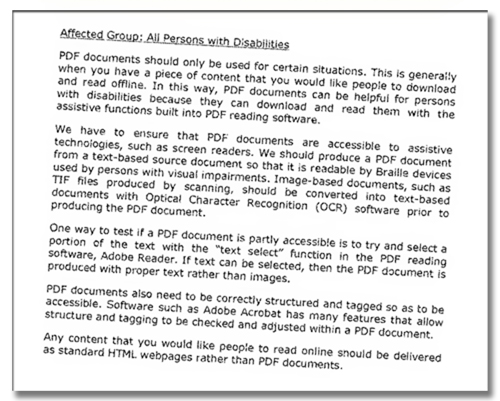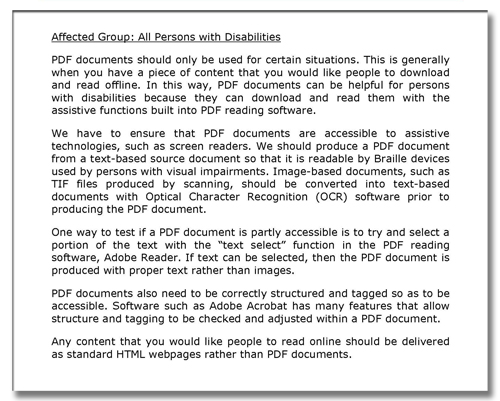6.10 Difficulties in Accessing Portable Document Format (PDF)
Affected Group: All Persons with Disabilities
PDF documents should only be used for certain situations, in particular when you have a piece of content that you would like people to download and read offline. In this way, PDF documents can be helpful for persons with disabilities because they can download and read them with the assistive functions built into PDF reading software.
We have to ensure that PDF documents are accessible to assistive technologies, such as screen readers in a correct reading order. We should produce a PDF document from a text-based source document and alternative text should be provided for images (except for decorative images), so that it is readable by Braille devices used by persons with visual impairments. Image-based documents, such as TIF files produced by scanning, should be converted into text-based documents with Optical Character Recognition (OCR) software prior to producing the PDF document.
PDF documents also need to be correctly structured and tagged so as to be accessible. Software such as Adobe Acrobat has many features that allow structure and tagging to be checked and adjusted within a PDF document. The techniques of making accessible PDF document is available at www.w3.org/WAI/WCAG21/Techniques/#pdf.
Any content that you would like people to read online should be delivered as standard HTML webpages rather than PDF documents.

This screen illustrates a common problem with PDF documents that have been scanned by scanners without OCR processing. Although they appear as text to a non-disabled person, they are not text that assistive technology can use.

PDF documents should be converted in such a way that they are text that screen readers can convert to speech if required.



